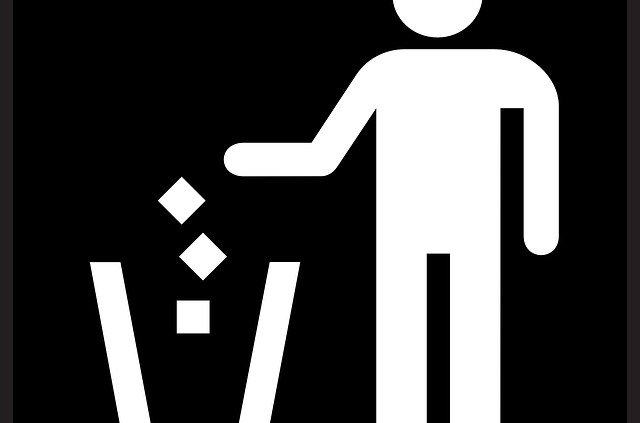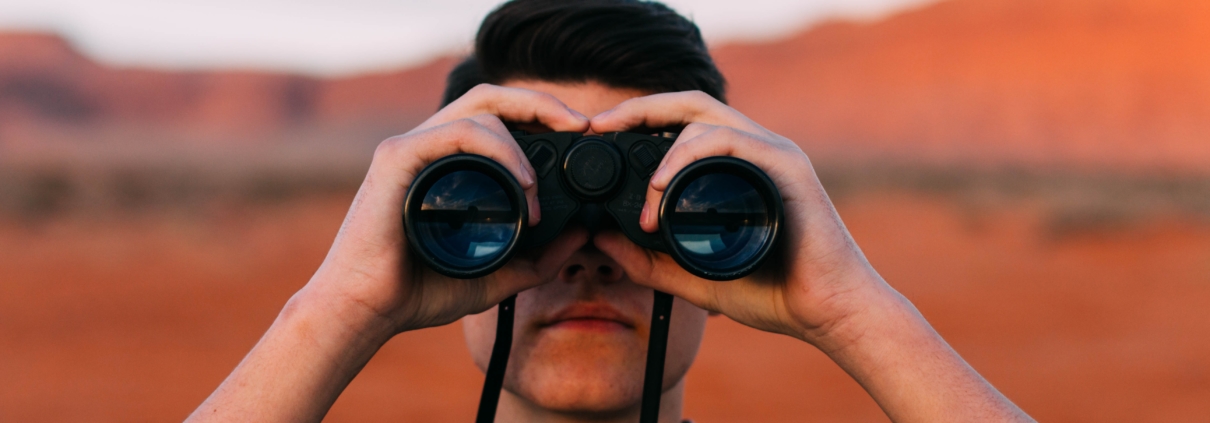Excuses are sneaky things. Sure, some of them are loud and whiny. But there are plenty of others whom you might mistake for good reasons, simply because they appear that way: They report for duty in fitted suits and fine shoes, freshly shaved and coiffed. Their job? To provide perfectly sound and logical responses to the question you keep thinking about: “Why haven’t I”—written my blog, pitched that editor, made a bigger effort to get in front of people.
Your excuses, disguised as “reasons,” have responses ready: The time isn’t right. You’re not ready. You should wait until you have more money or whiter teeth or more information.
These guys work hard—on the wrong things. It’s time to lay them all off.
Why? Because the reasons that you pay a lot of time and attention to are actually keeping you from your real goals: To stand out, step up, to speak out and get yourself heard.
I happen to know a few of these by name—I’ve caught them wasting my time too. It’s time to purge them from your mental workforce so you can recruit more effort for the things you want to achieve. Let’s tear the masks off these three in particular, Scooby Doo style.
Excuse #1: “I’m not an expert.”
In fact, you are an expert—not on everything, and probably not the only expert in the world or in your industry. But you absolutely are an expert in what you do. You likely assume other people know what you do. You would be wrong.
You underestimate what you know and how valuable it can be to others. If you spend your life keeping the books or planning parties or training dogs, you have an opinion about how to do it well. That means that you’re in a position to not just run your business, but to speak, write or contribute in the media as an expert on that topic. It’s true! You’re pretty driven by what you do and whom you help. Wouldn’t it be amazing to reach more people that way? Of course it would.
Excuse #2: I’m just a small business. No one’s looking for me.
You could run a brand-less business (see: the corner deli on my street) where you just take money and provide a service and keep it purely transactional.
But the reason you’re even reading this is because you want your brand, your work, to mean something. And for your brand to mean something, you need to stand for something, but also, have a reason why you do it, and communicate it to the people who need it most.
Just because you’re a small business doesn’t mean you should think small. But bigger does not mean “broader”—bigger means seeing the many other ways in which what you do matters to someone else. Find it and lean into it. (Here’s a post I did on how you know you’re having a brand crisis.)
Excuse #3: I need to do more research on the right software/platform/etc.
You might think a fear of tech and learning new tools would stop you cold. And it can. I knew an incredibly bright woman who wanted to start a podcast but was completely hung up over the tech. Paula and I showed her exactly what mic to get and we physically plugged it in for her and walked her through it. She couldn’t believe how easy it was.
But a love of tech can slow you up, too, because then you spend all this time researching instead of doing. One guy on FB was dithering over the right email platform because he hadn’t written to his list and wanted to.
I called him out on it, and said that he needed to just go with the one that seemed simplest and most appealing, the subtleties of functionality didn’t matter. He could always switch as his needs changed, but if he was already behind on his goal to connect with his readers in a meaningful way, it actually doesn’t matter which one he used right now. One lady disagreed with me and I called her out, too. Because I can get feisty on Facebook, and I also thought she was adding fuel to his perfectionist fire.
So whether you love tech and research, or loathe it all, do not let it stand between you and the people you want to reach.
Seth Godin says that perfectionism is a way of hiding.
Rather than waste time shopping for the right platform or tool, he says, you should shop for commitment, because that’s what you need right now. Boom.
It’s time for you to be committed less to your excuses and more to the brand you want to build. The world is waiting.
Terri Trespicio is the co-creator of Lights Camera Expert, a six-week program that teaches experts, authors, entrepreneurs how to get, and keep, media attention. Visit her at territrespicio.com.
If you want media attention for your book, brand, or business, you need to know what your “thing” is.
And by that I don’t mean your topic or your subject matter or your industry. Because that’s broad, and while it’s part of what you do and who you are, it’s hardly specific to you.
What I mean by ‘thing’ is that place where your personality, your expertise, your business, and your mission overlap to create that one unique fingerprint of a brand that is yours and no one else’s. Your special gift.
And yes, you do have it. I know you do because this is what I do—and I’ve never worked with someone who doesn’t have one! They just have trouble finding, or committing, to it. But most times, they can’t see the forest for the trees.
Let’s take an example.
If you’re a meditation teacher, your thing is going to have something to do with helping people access peace and stillness in a churning, distracting world. That’s great—but that’s what meditation does, and you are more than the tool you share. You might speak to a range of topics (yoga, mindfulness, stress, resilience, and so on).
But you are more than that. You are not just the technique or tools you teach, but the person who believes in it–and you have your own reasons why that is. THAT is your thing. THe key to get that into words.
Everyone I work with resists the idea of having “one thing.” Even I resist this idea sometimes. We don’t want to think of ourselves as two-dimensional, as similar to everyone else or unoriginal. But. When it comes to media, the broader your pitch, the less interesting you are.
I also know lots of people who throw EVERYTHING at a producer or editor (“I’m a this, and a that, and I do some of this and that”) and it’s confusing to them. And if a producer is confused, it’s a no.
A producer or editor or other member of the media can’t tell you what you are—so don’t leave it up to them to help you figure it out. They may have their opinions, and they may even suggest some things, if the spirit moves them. But it’s not their job to know; it’s yours.
Sure, there are a lot of people who might describe themselves in a way similar to you; i.e., help women invest their money, help millennials negotiate better salaries, offer men insights into how women think so they can win the right one over.
There are no new ideas under the sun—but there’s no one exactly like you. That’s the difference.
Think of your brand positioning as the thing that gets you up the mountain to where you’ll be more visible (a metaphor for media, you with me?). You may think, “oh I’m going to wear the most comfortable, softest shoes so I can wear them as I work my way up the mountain.”
But no. Those shoes are too broad and soft and they can’t hold up to the rigor that’s required of them to climb a steep mountain. You need an edge—something that can cut into the mountain, through the ice and snow and whatever else, and give you some steadier footing. You need the brand equivalent of hiking cleats!
If I am sitting down with the meditation teacher one on one, I’ll ask her why she got into meditation and what she thinks is important for people to understand about meditation, why they might resist it, and why they might want it and not realize it yet.
But I also want to know what she struggles with, and what she has in common with those who would benefit (and the answer can’t be “everyone” and if it is, she’s not being focused enough. Maybe it’s that she’s always been a wildly distracted and distractable person, and liked to move from one thing to the other, but realized she couldn’t finish anything. Maybe meditation gave her the freedom to be more creative without letting silly things detract from meaningful efforts. A distracted meditation teacher who applies the solution to her life? Now I’m interested.
And remember, you don’t have to be the only one doing what you do. If you were literally the only one, chances are that means no one’s interested in it.
It’s fine that there are scores of other meditation teachers or nutritionists or dermatologists. Doesn’t matter.
What matters is that when the media goes looking for one to interview or feature, that you give them a clear picture of who you are and what you think or do that’s specific to you. Find that thing, and go big with it.
Ask yourself:
- What am I trying to do, specifically?
- Why is this a problem for the people I’m speaking to?
- What misunderstandings do they have about “x” and how will I change their minds?
- What personal story do I bring to bear? What key insights?
And give your ideas the cliche test: If you’ve heard it a zillion times before, if everyone already agrees with it, keep digging.
Terri Trespicio is the co-creator of Lights Camera Expert, a six-week program that teaches experts, authors, entrepreneurs how to get, and keep, media attention. Visit her at territrespicio.com.
Everyone’s an expert in something. And the media’s job is to give its viewers and readers an interesting and informative take on a multitude of subjects.
That’s where you come in. The media is looking for you all the time. Don’t believe me?
Well — more than 35,000 journalists subscribe to Help a Reporter Out — better known as HARO to find the perfect expert to help them tell their stories.
It’s a simple concept that was thought up by public relations whiz, Peter Shankman. A reporter needs a source – a source wants to be found and voila HARO was born.
The email blast goes out three times a day with reporter queries ranging from, “people who wake up at 4AM to exercise” to “amazing gifts for designers that won’t be regifted” to “seeking knowledgeable African-American hair expert”.
If you’re an expert in one of the usually 50 or so queries, you can reach out to the reporter and pitch yourself as the perfect person to talk to for the story.
Ok, so how do you do that to make sure you get picked? Two ways:
- Be quick: I’ve used HARO as journalists and one of the things that happens when you hit send on your query– the floodgates open. Reporters are inundated with responses from experts ranging from darlings to duds. The key here is that because so many emails come in and reporters are often working on tight deadlines — you have to be first to the finish and deliver the goods.
- Be indispensable: What you say in your email matters. Don’t say you could provide tips or you will provide tips – actually do it! Time is of the essence here and you need to catch the reporter’s eye now. Be generous but don’t be overwhelming.
Pitching is pitching – no matter if you’re pitching your business to a potential investor, or pitching your expertise to the media. Keep the audience in mind — and answer this question when you’re answering HARO requests — “what will the reader/viewer take away from my tips?” So what will that person be able to do differently tomorrow after hearing your insights that will make their lives better and solve their problem?
Maybe they won’t eat a donut for breakfast because you’ve laid out three alternative meal ideas including a recipe for a nourishing Amazonian acai bowl. Yum.
Make Sending Responses Easier
Sign up for Help a Reporter Out emails and start monitoring the requests that come through and might be a fit for you. Then start answering them and keep track of what you send out.
Here’s how:
- Create a Google Doc or Evernote folder exclusively for responding to HARO requests. In it create documents for each individual request along with the query and your answer below it. Then when you work out what you want to say copy and paste your answer into an email to the journalist.
- When naming your documents be sure to be specific about what the pitch was about. For instance, it’s much easier to reuse “How to pack like a pro” rather than “Travel magazine HARO pitch.” You’ll save time the next time a similar inquiry comes through when you label specifically. You’ll come to find that after answering several of these your introduction will likely be the same. You’ll include your name, your expertise and links to your websites and books.
This is what my intro typically looks like when I reply to requests:
Hi there —
I’d love to help you with your article!
My name is Paula Rizzo and I’m an Emmy award winning television producer in NYC and founder of the productivity site ListProducer.com. I’m also the author of the book Listful Thinking: Using Lists to be More Productive, Highly Successful and Less Stressed.
- Then when you start answering queries about your expertise you’ll also find that your tips can be used for multiple requests with a bit of tweaking for each individual audience.
For example, if two journalists send out identical queries with the headline, “Best Productivity Apps” and one is from Brides magazine and one is from Parents magazine – you better believe you’ll need to cater to each audience specifically. However, some of your tips can translate for both audiences and it won’t take you as long as it would if you were starting from scratch each time.
Remember often times the first few responses to come through get the most attention because reporters are strapped for time. But make sure to send thoughtful and helpful responses. Also don’t worry if you don’t hear back sometimes you have to send to multiple outlets before getting a bite. But the good news is the more emails you answer the more ready-to-go pitches you’ll create in your pitching folder.
Paula Rizzo is the co-creator of Lights Camera Expert, a six-week program that teaches experts, authors, entrepreneurs how to get, and keep, media attention. She’s also the author of Listful Thinking: Using Lists to be More Productive, Highly Successful and Less Stressed.



